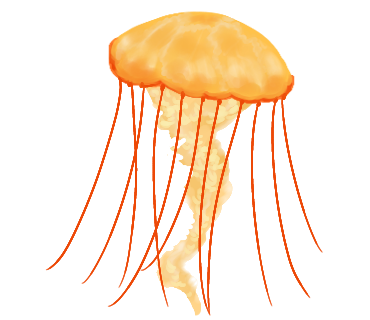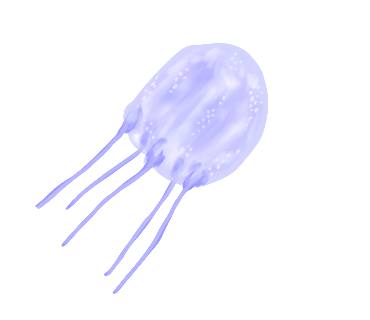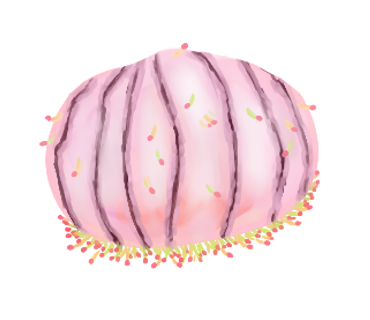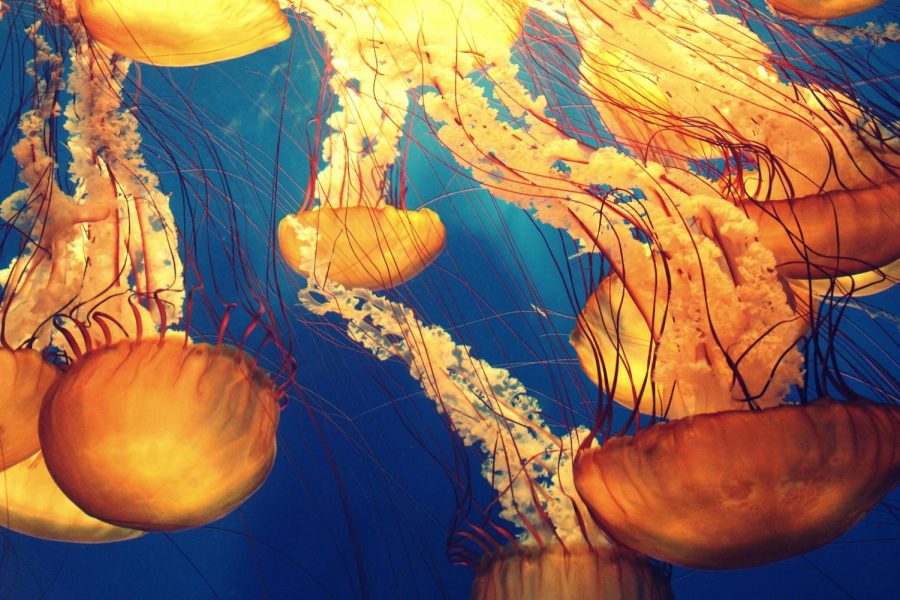Jellyfish: No Brain, Head Empty
Explore the world of jellyfish
February 2, 2021
Despite having the word “fish” in their name, jellyfish are not actually fish at all! They’re something akin to moving sea anemones, coral, or venus fly traps. With no brain, no bones, and no gills, jellyfish wander the ocean for as long as 30 years floating mysteriously. Most people don’t have the first clue to what jellyfish are, or how many different types exist in the ocean. There are over 200 different species, but they can be divided into three categories.
 Scyphozoa— “True Jellyfish”
Scyphozoa— “True Jellyfish”
(Crown jellyfish, Rhizostomeae, Semaeostomeae, etc)
Scyphozoa is the largest and most well known category of jellyfish. Smaller Scyphozoa feed on food particles, while larger ones feed on small fish or swimming invertebrates. They sting through their oral arms (the frilly tentacle) and can be found washed up on beach shores.
According to ucmp.berkeley.edu, “The contraction of the peripheral muscles [what makes the jellyfish swim] is controlled by a loose network of nerves which circles the bottom of the bell [the “head” of the jellyfish.] There is no controlling brain or central nervous system to aid coordination.”
Cubozoa— “Box Jellyfish”
(Moon jellies, Lion’s Mane jellyfish, Chironex fleckeri)
Although they are small and harmless looking, box shaped jellies are the most venomous type of jellyfish! They’re very quick due to their strong muscles, and their stings can be fatal to humans. You usually don’t encounter these jellyfish close to the shore, thankfully.
According to ucmp.berkeley.edu, “[Cubozoa] have been reported to maneuver around the pilings of peers and to flee would be human collectors. These behaviours can only be achieved because cubozoans have vision.”
Cubozoa are the only category of jellyfish with eyes. In fact, they have 24 eyes scattered throughout their bodies. They’re quite scary predators.
 Hydrozoa— “Are They Actually Jellyfish?”
Hydrozoa— “Are They Actually Jellyfish?”
(Flower hat jellies, Leptothecata, Fire Coral)
This “subcategory,” if you could even call it that, has over 2700 species that are vaguely related to jellyfish. It’s such a broad label that it’s hard to pinpoint specific features of them, but most Hydrozoa stay in their polyp (stationary sea anemone) phase rather than their medusa (jellyfish) stage.
According to seattleaquarium.org, “The medusa form of jellyfish (with its bell-shaped body and long tentacles) is just one of several stages in the jellyfish life cycle. Jellyfish progress through a number of other forms.”
Hydrozoans are also known to form colonies or systems, where each member has a different role to fulfill (Feeding, catching prey, etc.)

